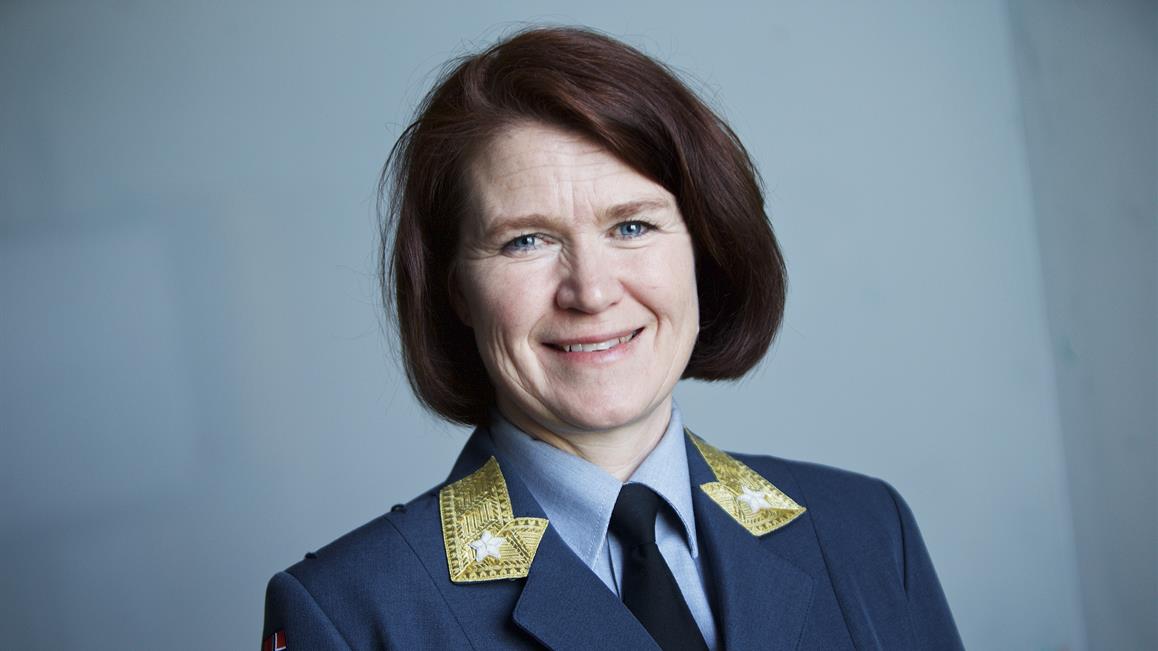2017-01-28 The Norwegian Air Force is to have a new Chief of Staff.
According to a story published on the Norwegian Ministry of Defence website on January 27, 2017, Brigadier General Tonje Skinnarland was appointed Major General and Chief of the Royal Norwegian Air Force today (CRNORAF).
“Skinnarland is an experienced, proficient and highly skilled officer.

“Her broad knowledge is based upon several years of service within the operational field in the Royal Norwegian Air Force as well as many years of practice at staff level within the Defence Forces.
“She has also served at the Ministry of Defence. Skinnarland is the first female to be appointed Chief of the Royal Norwegian Air Force.
“Skinnarland graduated from the Norwegian Defense War College in 2003, and she received the Chief of the Defense Forces’ Honorary Award.”
2017-01-27 (U) Major General Skinnarland – CV – English
Brigadier General Tonje Skinnarland becomes head of the Norwegian Air Force at a crucial time in its transition.
Norway stands at an interesting global and historical point in the evolution of Western defense.
It faces directly resurgent Russia and faces the challenge with its Nordic partners of Baltic defense as well.
Then with the Arctic opening and the High North actually part of Norwegian territory Arctic security and defense are not an abstract intellectual issue for a Washington seminar, but an integral part of the shaping an effective way ahead.
In effect Norway is enhancing its core defense capabilities for national and coalition purposes.
It is part of what we have referred to as a deterrence in depth strategy whereby national components can operate as tip of the spear or support elements to core coalition partners crucial to Norwegian defense and strategic interests.
Notably, air and naval power modernization is a key part of the Norwegian effort as well as shaping the kind of ground maneuver defense capability appropriate to its territory and Arctic operations.
The Norwegian effort gains greater significance not simply from the resurgence of Russia but political developments in Europe itself, namely Brexit and its follow on consequences. It is clear that a post-Brexit defense policy highlights the importance to Britain of a North Sea and Baltic defense strategy and with that its relationships with the Nordic states.
New platforms have been or are coming into the Norwegian Armed Forces which support the evolution of a deterrence in depth strategy.
The acquisition of Aegis class ships has been an important baseline to shape a way ahead with air and potentially missile defense for the country and a major contributor to the regional capabilities for deterrence in depth.
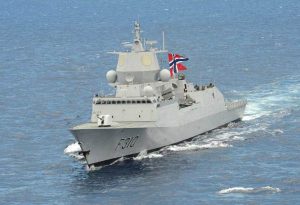
We have argued for some time that the Aegis ships are highly complimentary to the F-35 and have argued respectively that the F-35 can contribute to the “long reach of Aegis, or Aegis could function as the wingman of the F-35.
http://www.usni.org/magazines/proceedings/2012-01/long-reach-aegis
https://sldinfo.com/f-35-and-aegis-preparing-for-the-integrated-fight-in-the-extended-battlespace/
https://sldinfo.com/pacific-strategy-vii-“aegis-is-my-wingman”/
Not surprisingly, the F-35 is coming to the Norwegian forces as a key bedrock system for the evolution of the strategic way ahead.
It is not simply about the aircraft but its integration into the national or coalition forces with which Norway operates to provide the deterrence in depth necessary for national and regional defense.
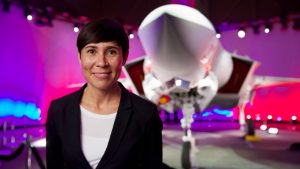
Next month, the Norwegians are holding a conference which will highlight some of the contributions anticipated by the acquisition of the F-35 for Norwegian forces.
On Feburary 7-9 2017, a conference entitled “Evolution to a Fifth Generation Air Force: Norway’s Shield and Sword?”
According to the Norwegian MoD website:
Norway is about to purchase fifty-two F-35 Joint Strike Fighters. Both the Norwegian Minister of Defense (MoD) and Chief of Defense (ChoD) argue that the F-35 will be a key capacity for the defense of Norway.
Even so, the purchase of the F-35 has generated a public debate that has raised important questions such as: How should we use the new combat aircraft? Do we have adequate competence to exploit the potential of this platform? What kind of defense structure will Norway have in the future? Are the primary rationales behind the purchase rooted in national defense, international operations or both?
The Royal Norwegian Air Force has coined the phrase “a Fifth Generation aircraft demands a Fifth Generation Air Force”. The premise seems to to be that the current air force organization needs to develop something it currently does not possess in order to fully exploit this platform once it is fully operational in 2025.
The emphasis on the idea of “a Fifth Generation Air Force” is increasing. But what kind of competence, organization, and technology must be in place over the next 8-10 years in order for us to become a “Fifth Generation Air Force”?
The Norwegian Minister of Defense claims that Norway has become a medium NATO power – presumably largely due to the fact that this is a substantial investment that most nations in NATO cannot afford. It is likely that this investment will lead to commitments to other nations that we otherwise would not have had: once you have acquired these platforms, the political pressure to use them will increase.
The question remains whether Norway can muster officers with broad and professional competence, who can influence processes on all levels (not only the tactical one) in international operations.
Thus, how we define “a Fifth Generation Air Force” is central for addressing these issues.
The conference aims to reflect on and discuss the very premises for the current debate on defense in Norway and NATO, and how airpower will play a central role in this picture. We also want to examine the key international military conceptual (strategic) trends that are likely to influence Norway in the coming decade.
Furthermore, the conference aims to challenge the Air Force to answer more specifically what “a Fifth Generation Air Force” is, and what is needed in order for us to become one.
Finally, we would like to invite the Army, the Navy and the Norwegian Operational Headquarter to present their expectations and perspectives on “a Fifth Generation Air Force”, and the purchase of the joint resource that the F-35 is.
https://forsvaret.no/hogskolene/Sider/English.aspx
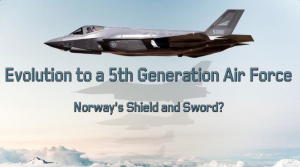
An additional capability being added to the force are five P-8s. and the role of these aircraft will be clearly linked to coalition as well as national defense.
Notably, the first agreement signed with an ally in the military domain by the Trump Administration was with the UK and supported the UK-US-Norwegian cooperation on the P-8 and maritime domain security.
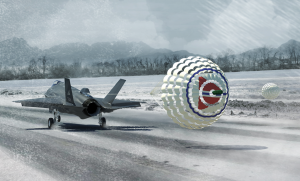
The Chute Adapter is built into the Norwegian F-35As on the final assembly line at Fort Worth.
In short, as Norway works on the integration of its Aegis ships with the F-35s and P-8s. it will be shaping a 21st century defense capability which is important to Norwegian defense and deterrence depth.
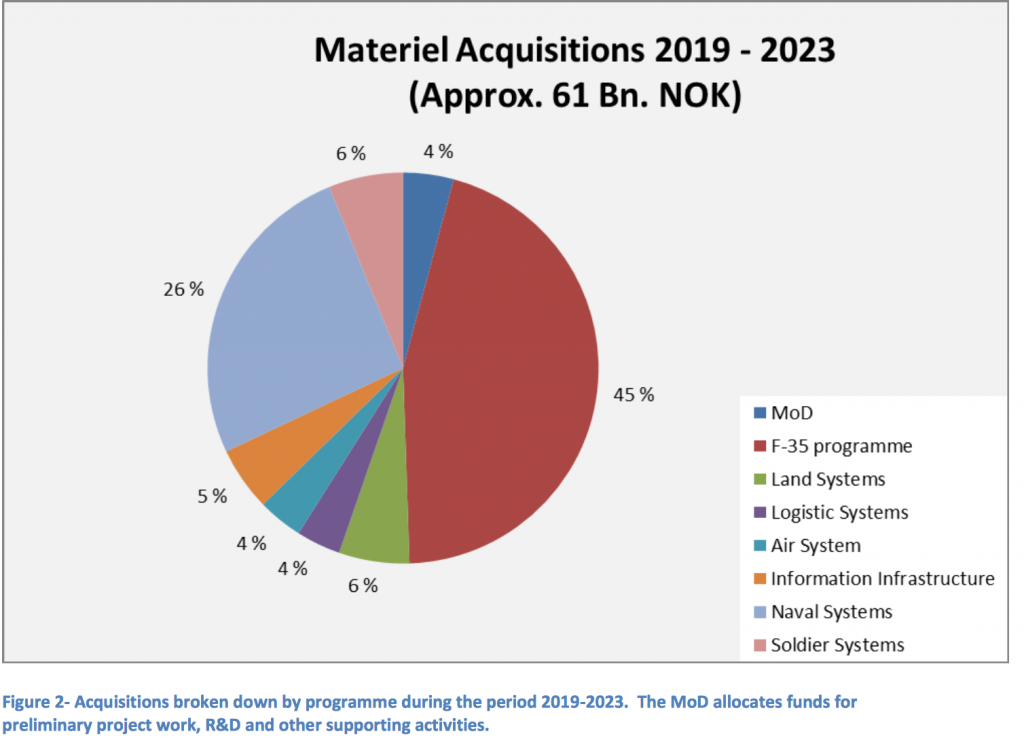
future-acquisitions-for-the-norwegian-armed-forces-2015-2023
For an insightful overview on the F-35 written by a Norwegian F-35 pilot, see the following:


